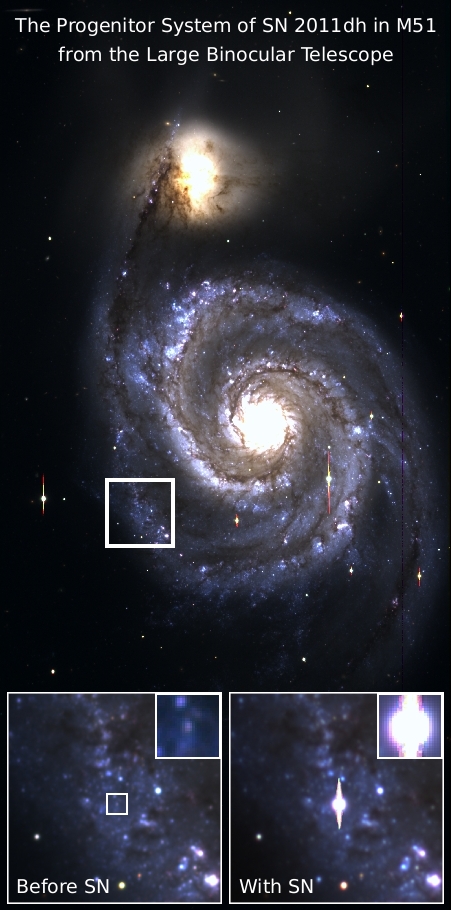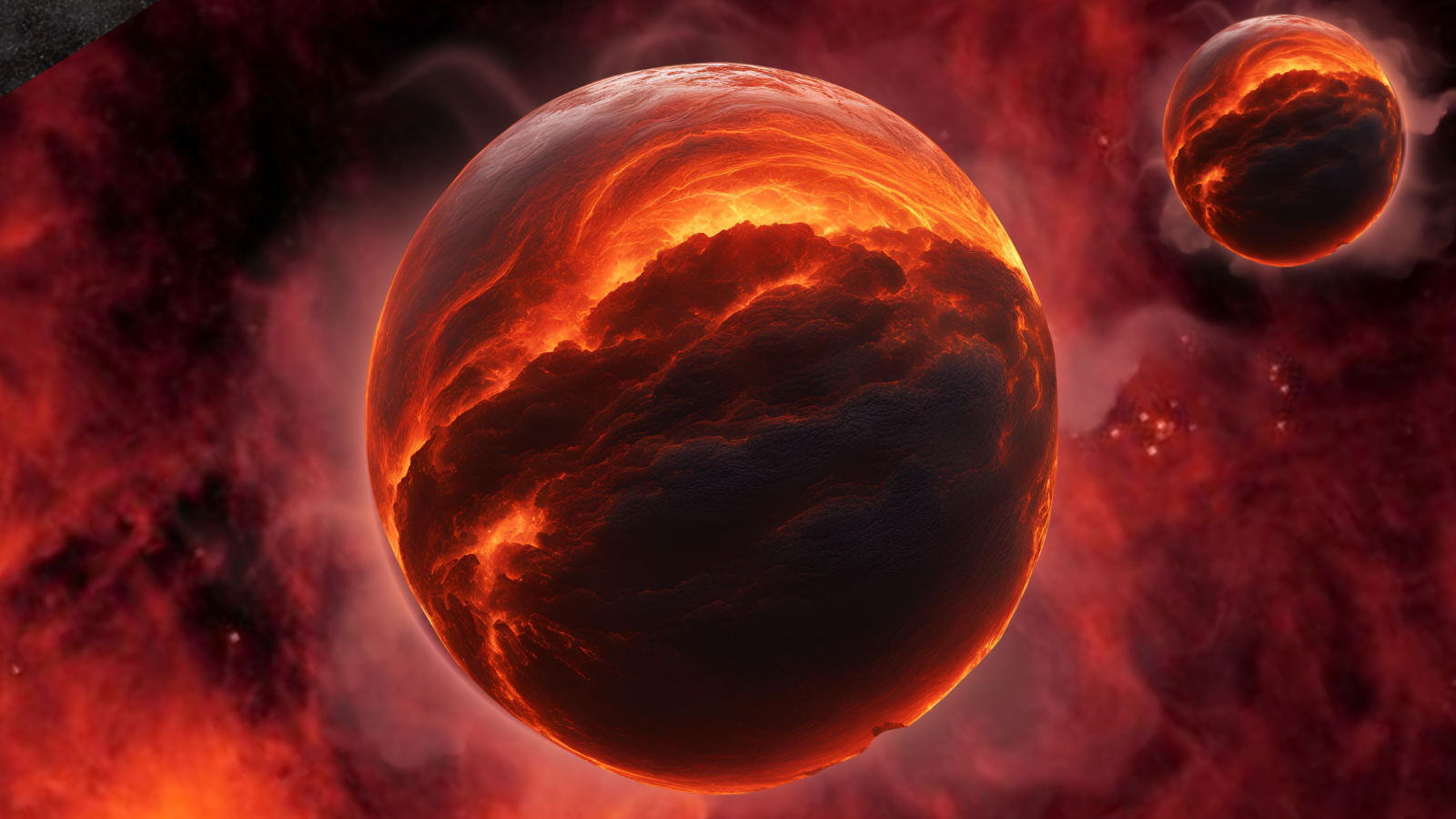Astronomers Closing in on Stars About to Explode

Astronomers seeking to observe a star just before it explodes have come tantalizingly close to achieving their goal, a new study reports.
For the last three years, the researchers have been scanning 25 nearby galaxies for stars that brighten and dim in unusual ways, with the aim of catching a few about to die in massive supernova explosions. This past summer, they saw one star in a binary pair dim noticeably before the other one went boom, the scientists said.
While the astronomers don't think they managed to get any direct observations of the star that exploded, the find is encouraging nonetheless, they said.
"Our underlying goal is to look for any kind of signature behavior that will enable us to identify stars before they explode," study co-author Christopher Kochanek, of Ohio State University, said in a statement. "It’s a speculative goal at this point, but at least now we know that it’s possible." [Photos of Great Supernova Explosions]
Elusive near-death stars
The survey, which utilizes Arizona's Large Binocular Telescope, is a systematic effort to determine if stars about to go supernova tip their hand in any way.
"The odds are extremely low that we would just happen to be observing a star for several years before it went supernova. We would have to be extremely lucky," said study lead author Dorota Szczygiel, also of Ohio State University. "With this galaxy survey, we’re making our own luck. We’re studying all the variable stars in 25 galaxies, so that when one of them happens to go supernova, we’ve already compiled data on it."
Get the Space.com Newsletter
Breaking space news, the latest updates on rocket launches, skywatching events and more!
They came close with an unnamed binary system in the Whirlpool Galaxy, also known as M51. This system is thought to have contained one bright blue star and one even brighter red star, researchers said.
The blue star exploded. The supernova, labeled 2011dh, was first detected May 31 and is still visible in telescopes. The researchers' survey yielded good observations of the red star, showing that it dimmed by about 10 percent over the last three years. The team doesn't think it got observations of the blue star before it exploded, however.
It's likely the red star survived its partner's demise, researchers said.
"After the light from the explosion fades away, we should be able to see the companion that did not explode," Szczygiel said.
A litmus test for supernovas?
The astronomers hope that their survey provides clues about how stars look and behave before they explode, allowing researchers to identify likely supernova candidates in advance.
The data set may eventually yield good observations on as many as one supernova per year, researchers said.
The team won’t be watching our sun for any changes, however. Our star is too small to explode; in about 5 billion years it will bloat into a red giant, then shrink down into a dead, super-dense object called a white dwarf.
"There'll be no supernova for our sun; it'll just fizzle out," Kochanek said. "But that's OK — you don't want to live around an exciting star."
Follow SPACE.com for the latest in space science and exploration news on Twitter @Spacedotcom and on Facebook.
Join our Space Forums to keep talking space on the latest missions, night sky and more! And if you have a news tip, correction or comment, let us know at: community@space.com.

Space.com is the premier source of space exploration, innovation and astronomy news, chronicling (and celebrating) humanity's ongoing expansion across the final frontier. Originally founded in 1999, Space.com is, and always has been, the passion of writers and editors who are space fans and also trained journalists. Our current news team consists of Editor-in-Chief Tariq Malik; Editor Hanneke Weitering, Senior Space Writer Mike Wall; Senior Writer Meghan Bartels; Senior Writer Chelsea Gohd, Senior Writer Tereza Pultarova and Staff Writer Alexander Cox, focusing on e-commerce. Senior Producer Steve Spaleta oversees our space videos, with Diana Whitcroft as our Social Media Editor.
